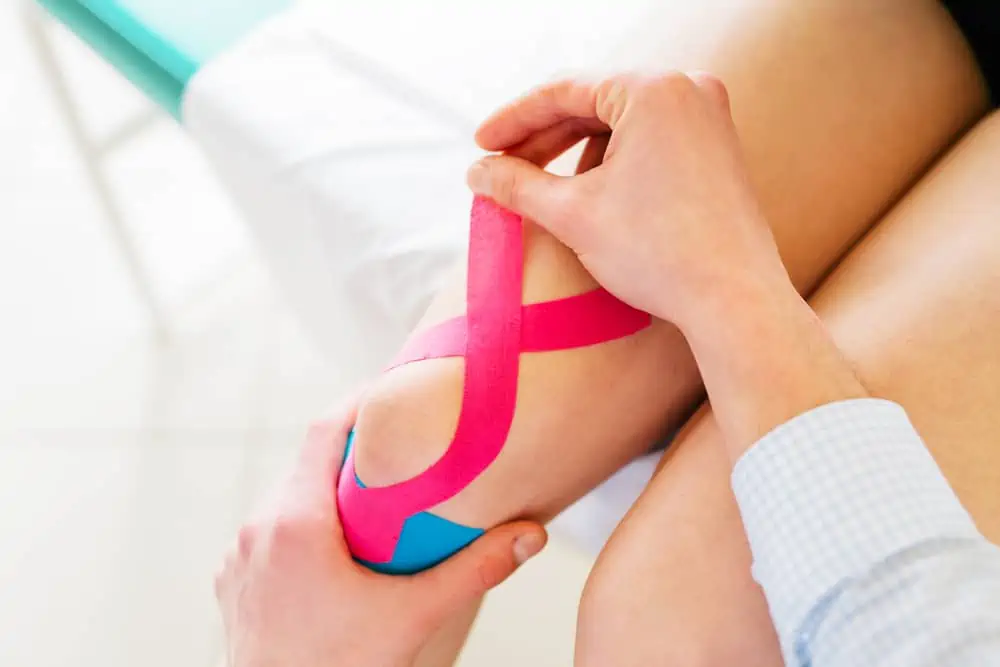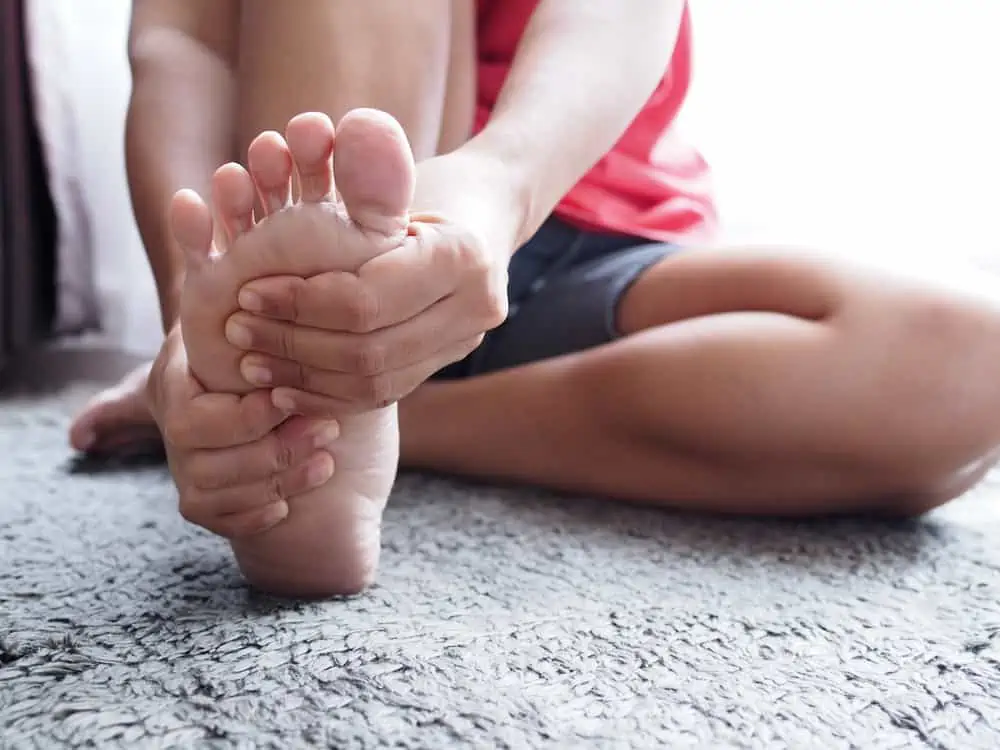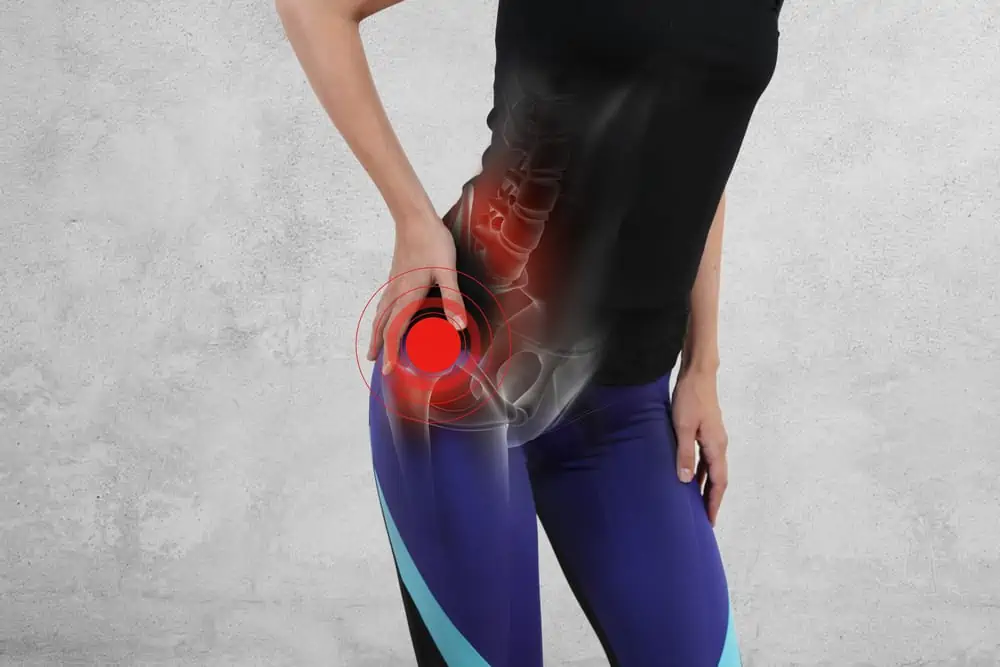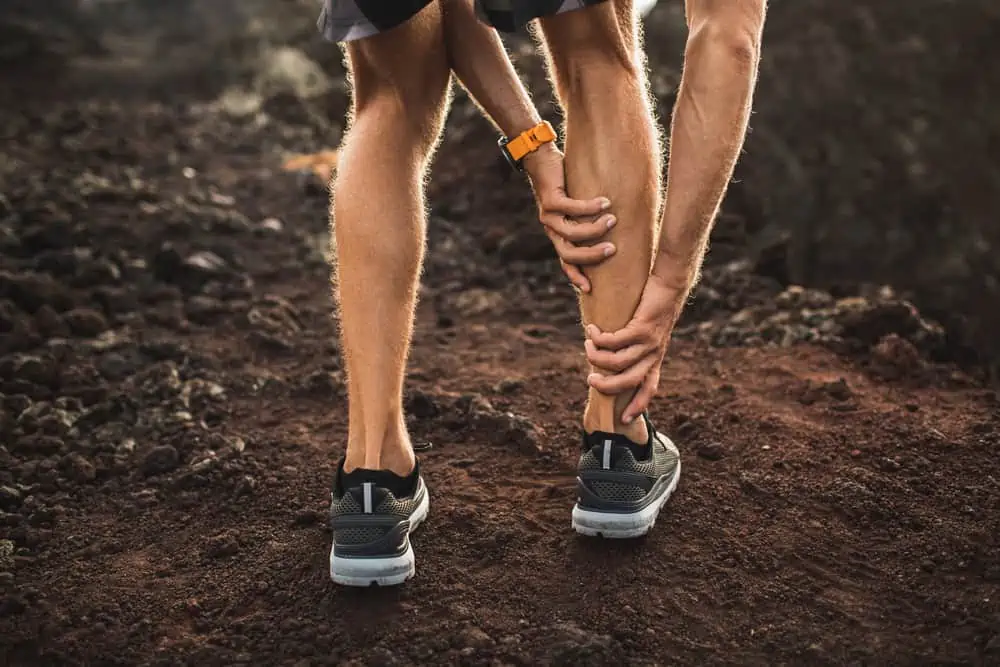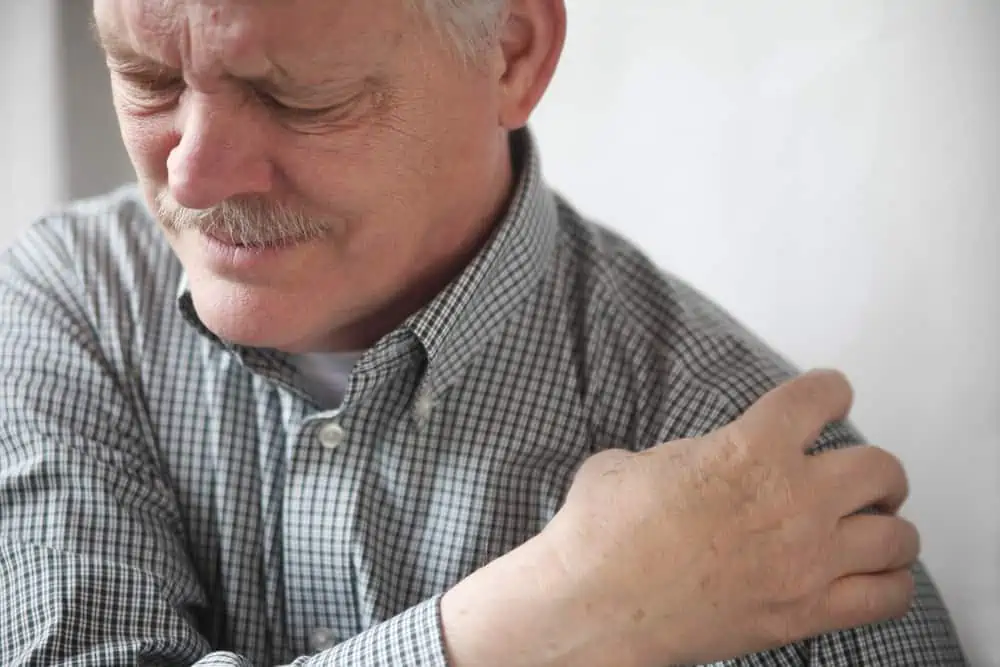This post may contain affiliate links. If you click through a link and make a purchase, I may receive a commission at no additional cost to you. As an Amazon Associate, I earn from qualifying purchases. Read the full disclosure here.
Have you ever wondered if slapping on some colorful tape can solve your knee pain problems? After all, athletes are always covered in it, so it must be good.
Taping is a popular go-to for injuries and patellofemoral pain is no exception. Although it may be popular, does it actually work?
As a certified Kinesio taping practitioner, let me help you explore the different options for taping for patellofemoral syndrome as well as how to best use this option to support your recovery.
If you’re looking to start patellofemoral pain taping at home, here’s what you’ll need:
- Kinesiology tape (Rock Tape or Kinesio Tape)
- Alcohol wipes
- Tape adhesive spray (optional)
- Tape remover spray for painless removal
Disclaimer: This content is for educational purposes and is not medical advice. Read the full disclaimer.
What is patellofemoral syndrome?
The patella is a triangular-shaped bone that’s embedded within the quad tendon and functions as a fulcrum to increase the strength and power of the quads.
The surface on the underside of the patella has a few different angles to slide comfortably on the femur when bending and extending the knee.
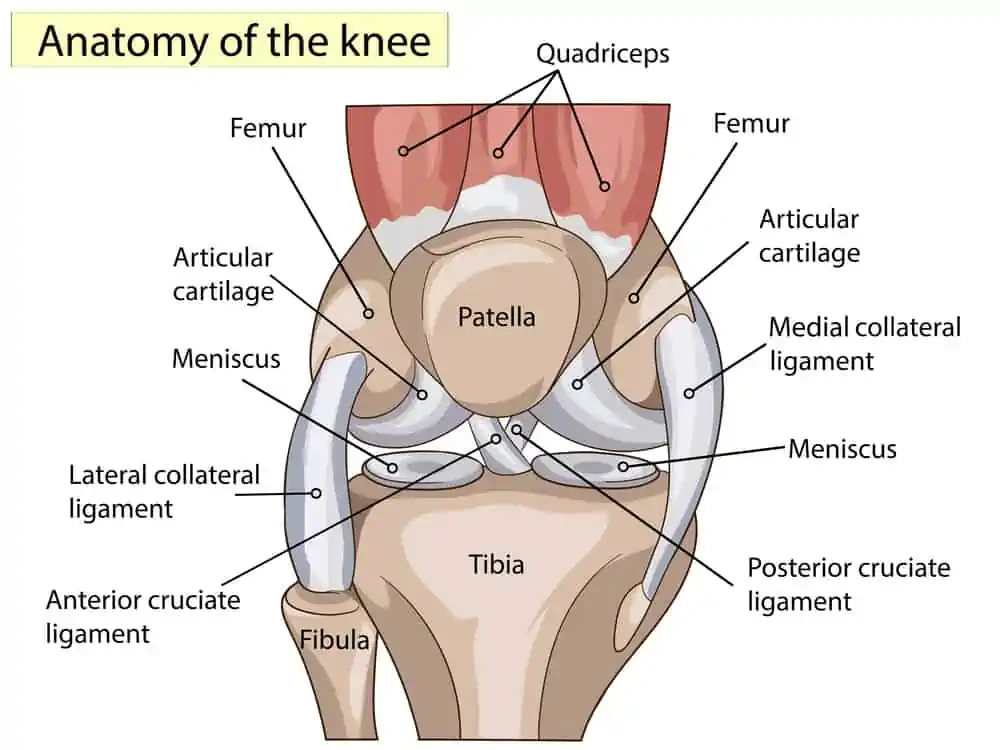
Patellofemoral pain syndrome is a broad term to describe pain in the front of the knee, around, or underneath the knee cap. (Sometimes referred to as PFPS for short.)
Runner’s knee, jumper’s knee, patellofemoral pain syndrome, or chondromalacia are sometimes used to describe patellofemoral pain. (Although chondromalacia is an actual softening of the cartilage underneath the knee cap.)
Patellofemoral pain tends to be more common in young females; this may, in part, be due to differences in the pelvic and hip structures that affect the alignment of the knee and how forces are transferred through the joints.
The optimal functioning of the patellofemoral joint relies on good strength, mobility, and alignment of the hips, knees, ankles, and feet to avoid altered mechanics straining the joint.
Patellofemoral pain typically increases with activities that increase pressure between the undersurface of the patella and the femur. Activities such as climbing stairs, squatting, and sitting for long periods of time are typical suspects for increasing pain levels.
Taping for patellofemoral syndrome
Taping is a common technique used for pain relief in the treatment of patellofemoral pain. The catch is that taping shouldn’t be viewed as a band-aid or quick fix and is only useful when you know why you’re doing what you’re doing. (More on why in the next section.)
When searching for patellar taping techniques, two different types pop up – McConnell patellar taping and kinesiology taping. These two techniques are very different.
McConnell taping (invented by Jenny McConnell) uses a rigid tape (such as leukotape) and is traditionally used to correct various patellar alignment problems (such as a lateral tilt).
McConnell taping also restricts full range of motion into knee flexion and creates a compression effect, which may contribute to pain relief.
Research is mixed as to whether this type of taping actually affects alignment “problems,” but typically demonstrates some level of pain reduction, which is usually the most important first step.
One of the things we’ve learned in physical therapy in recent years is that maybe we shouldn’t get as excited about tiny variations in alignment. They could be your natural alignment and may not even be a cause of the problem, like the dreaded anterior pelvic tilt.
There’s likely a research article to justify whatever side of the fence you’re on.
I rarely use McConnell taping anymore in my practice and tend to favor kinesiology taping coupled with a comprehensive strength program. I’m not saying it’s bad, I just find kinesiology taping works better for my treatments. There’s something for everyone.
Kinesiology tape is sometimes casually called kinesio taping or KT taping, but these are just brand names of tape that come under the kinesiology taping umbrella. (KT tape and Kinesio tape are different brands.) There are also different kinesiology taping techniques for patellofemoral pain.
Some popular kinesiology tape brands are Kinesio Tape, Rock Tape, and KT Tape.
What I like about kinesiology taping is the benefit of decreased pain via proprioceptive input without restricting the range of motion. I find with most patients, taping significantly decreases perceived pain and allows the patient to focus more comfortably on strengthening exercises to get rid of pain in the long run.
Since kinesiology tape has a lot of elasticity, it’s not likely to affect patellar position but provides more of a proprioceptive “guide” to the system and may increase the mind-muscle activity connection.
Below are some video examples of McConnell taping and kinesiology taping to illustrate the wide variety of techniques. The best technique for each person depends on their individual presentation.
Below are some great videos to learn how to tape your knee for patellofemoral syndrome.
Related read: How To Use Kinesiology Tape So It Actually Stays On
Does taping for patellofemoral pain work?
Patellofemoral kinematics (how two joint surfaces move on each other, in this case, the patella and the femur) are complex. The knee joint is also influenced by forces from the angles of the hip and ankle.
To answer this question, it’s important to understand what taping can and can’t do.
Some arguments for taping are more scientifically backed than others. One of the biggest benefits of taping seems to be increased proprioceptive input to the skin, which may help improve movement patterns, reduce compensation, and improve tolerance to exercises.
Taping may help relieve some pain and allow for more tolerable exercise, however, taping alone does not fix patellofemoral pain due to the influence of other biomechanical factors.
Taping as part of a comprehensive rehab program may provide some benefits but should not be seen as a quick fix or permanent solution to a deeper issue.
Improving muscle strength for the quadriceps muscle and glutes, as well as improving dynamic postural control with activities, ultimately helps reduce patellofemoral pain.
For more tips on taping (including what NOT to do), see this article – How Kinesiology Taping Works
What is the “VMO muscle,” and can you isolate it?
The quadriceps muscle comprises four parts (the vastus lateralis, vastus intermedius, vastus medialis, and rectus femoris).
VMO stands for vastus medialis obliquus and is a portion of the vastus medialis muscle located on the inner side of the quads.
For years in rehabilitation, there was the idea that strengthening the VMO would fix patellofemoral pain by “pulling” the patella more medially and that isolated strengthening of this area could be performed.
This was often combined with “stretching” the IT Band.
But the VMO seems to be one of those myths that just won’t go away.
The VMO doesn’t have a separate nerve innervation; therefore, it’s impossible to isolate just this one portion of a muscle.
So instead of trying to isolate a specific portion of a muscle, we now know to focus our efforts on the entire quad muscle (and all it’s components).
Wrapping up
Patellofemoral pain is a common problem and tackling it with a multipronged approach yields the best results.
Patellofemoral taping may be a useful tool along the rehab spectrum, however, it should not be used as a replacement for more active treatments or thought of as providing more benefit than it possibly can.
Don’t miss another article by signing up for my email list below!
References
Campolo M, Babu J, Dmochowska K, Scariah S, Varughese J. A comparison of two taping techniques (kinesio and mcconnell) and their effect on anterior knee pain during functional activities. Int J Sports Phys Ther. 2013;8(2):105-110.
Dutton, Rebecca A. MD; Khadavi, Michael J. MD; Fredericson, Michael MD, FACSM Update on Rehabilitation of Patellofemoral Pain, Current Sports Medicine Reports: May/June 2014 – Volume 13 – Issue 3 – p 172-178 doi: 10.1249/JSR.0000000000000056
Effects of Kinesio Taping versus McConnell Taping for Patellofemoral Pain Syndrome: A Systematic Review and Meta-Analysis. Evid Based Complement Alternat Med. 2015;2015:471208. doi:10.1155/2015/471208
Leibbrandt DC, Louw QA. The use of McConnell taping to correct abnormal biomechanics and muscle activation patterns in subjects with anterior knee pain: a systematic review. J Phys Ther Sci. 2015;27(7):2395-2404. doi:10.1589/jpts.27.2395
Logan CA, Bhashyam AR, Tisosky AJ, Haber DB, Jorgensen A, Roy A, Provencher MT. Systematic Review of the Effect of Taping Techniques on Patellofemoral Pain Syndrome. Sports Health. 2017 Sep/Oct;9(5):456-461. doi: 10.1177/1941738117710938. Epub 2017 Jun 15. PMID: 28617653; PMCID: PMC5582697.

